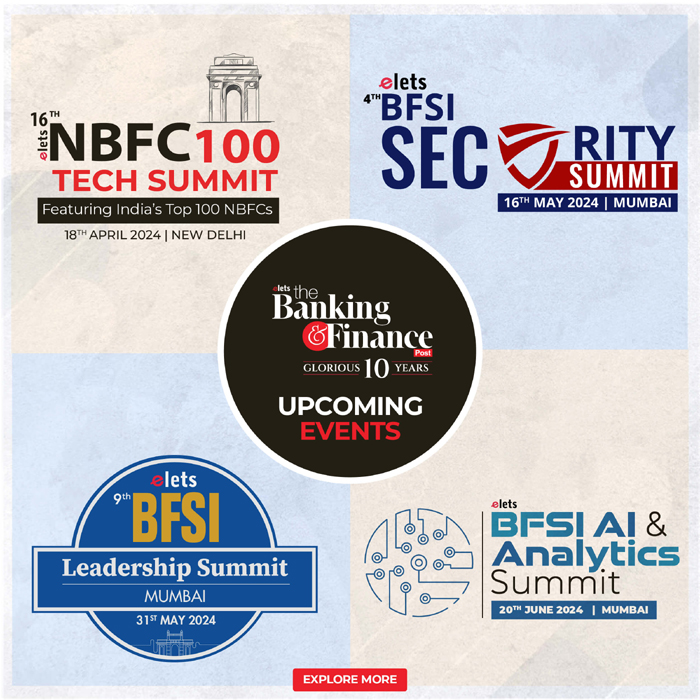The world around us has changed and the pandemic, which is most likely to enter the third wave, induced these changes. It won’t be wrong to say that every industry brought some significant changes to maintain continuity amid the uncertainty. The BFSI sector, which has always been enthusiastic about innovation, took these challenging circumstances as an opportunity to innovate, and experts have been highlighting the same. To understand, how Small Finance Banks responded to the change, Rashi Aditi Ghosh of Elets News Network (ENN) spoke to Ankit Khare, VP-IT, Shivalik Small Finance Bank. During the exclusive conversation, Khare stated that “Small Finance Banks (SFBs) are playing a pivotal role in reaching out to the underserved. They are facilitating easy access to credit for individuals entities typically under-served by mainstream banks and financial services institutions.” During the conversation, he also talks about the roadmap for the remaining 2021 and the role of the cloud as a primary choice for new application deployment.
Excerpts of the Conversation
1. What challenges did you face when the pandemic first struck? Did it accelerate the digital strategies at your organization?
One of the key challenges was to maintain business continuity with minimal risk to our workforce. Our strong BCP planning came to the rescue and we were able to get going with little to no disruption. Moreover, continuing with the business momentum with restricted movements, both for the customers as well as our teams, was a bit of a challenge.
Since customers were looking for alternate ways to manage their banking needs, we encouraged them to take advantage of our comprehensive suite of digital banking services: Internet Banking, Mobile Banking, SMS Banking and Micro-ATMs for them to transact in the safety of their homes. Minor but quick modifications and offerings were offered to customers to make their experience as seamless and frictionless as possible.
While transactions through the branches and ATMs were reducing, given the lockdowns and restricted citizen mobility, we were seeing a multi-fold increase in traffic on our digital banking channels.
Also Read: Accelerating Banking Digital Transformation
We continue to build on the momentum, offering more and more services digitally, including UPI, E-mandate, Online Customer-onboarding, gold loans to name a few. We are also partnering with FinTech companies and neo-banks to offer an even more exhaustive bouquet of digital services to customers.
2. Which disruptive technologies are currently shaping/reshaping the banking and finance industry in India?
Cloud and other emerging technologies like artificial intelligence/machine learning (AI/ML), robotic process automation (RPA) are helping BFSI companies modernize their business, reimagine service delivery and improve customer experience. While Cloud has offered a cost-effective approach to the banks to run their applications while remaining focused on the business, AI/ML have ensured banks have a better understanding of their customers’ transactional habits – which can be effectively put to use for fraud prevention as well as to offer curated services aligned to a customer’s needs. RPA on the other hand is helping banks optimize complicated, inefficient and time-consuming processes as well as workflows like loan appraisals and disbursement, customer on-boarding etc., improving overall turnaround time, also reducing human errors.
Digital banking continues to witness increased adoption. Demand for contactless banking services continues to rise in the wake of the pandemic. Technologies like near field communications (NFC) and magnetic secure transmission (MST) are not only allowing an all-new way to use your debit/credit cards but also empowering wearables like smartwatches to help you pay.
The success of born-digital FinTech companies is further spawning new digital innovations in our industry. Digital payments have become the new battleground with FinTech companies giving banks a run for their money with possibilities unheard of until not too long ago. Also, UPI and QR codes have changed the way we make payments forever.
3. What role will small finance banks play in the next banking revolution?
The pandemic has highlighted the need for greater digital integration and financial inclusion in India. Small finance banks (SFBs) are playing a pivotal role in this endeavour. They are facilitating easy access to credit for individuals and small businesses, including small business units, small and marginal farmers, micro and small industries and unorganized entities typically under-served by mainstream banks and financial services institutions. The main USP of small finance banks is low operating costs. This gives them the advantage to survive in the market with minimal profit, offering economically viable products and services to customers and remain agile in terms of adapting to the growing or changing needs of customers. Moreover, they have an important role in terms of accelerating financial literacy since they engage closely with the under-served segments, being more than just a bank for them.
4. How are you strategizing your innovations to boost the level of financial inclusion in the country?
Considering the needs of customers from the segments we serve, we have a two-pronged strategy: (a) to minimize the need for customers to step into our branch for their banking requirements and (b) deliver an easy to use and effective digital experience to customers. The underlying spirit remains to simplify banking for them.
We are serving over 4.5 lakh customers based intier2 and 3 cities in Uttar Pradesh, Madhya Pradesh, Uttarakhand and Delhi via 31 branches and 4 BC centres. We are also taking banking services to our customers’ doorsteps in remote areas with our network of 300+ field agents via a Tab/HHDs-based banking application.
65 percent of our overall customer base transact with us through digital channels: Internet banking, Mobile Banking, Bank portal and SMS Banking. More than 80 percent of our transactions happen through digital channels. Adding to the ease of the customers, features like customer on-boarding, account opening(savings/deposits), loan eligibility checks, loan applications, payment of loan EMIs, service requests etc. have been made available on our digital channels. This has substantially added to our outreach. For reference, nearly 95 percent of new savings accounts are being opened via digital platforms.
Also Read: Banking post-COVID: Will the future be built on trust or technology?
We continue to use technology to bridge the gap between the customer and the bank.
5. Why is Shivalik Small Finance Bank betting on cloud-led innovation for growth?
Shivalik Small Finance Bank has been an early cloud adopter, since 2013. Using cloud solutions have helped us reduce costs by optimizing resources, enabled easy scaling and strengthened our cyber resilience. We’ve been able to focus better on our core business, introduce new products/services quickly to customers and enhance their overall banking experience.
6. How has the bank benefited by using Oracle Cloud Infrastructure? What impact will this have on your end consumers?
With Oracle Cloud Infrastructure (OCI), we have gained access to a secure, second-generation cloud platform that offers extreme performance at the lowest costs. We can use industry-leading Oracle products – API Management, Integration Engine, Autonomous Database – to name a few. With OracleUniversal Credits, it’s fairly simple and easy to use any of Oracle Cloud services, anytime. We can easily switch between different subscription/billing models and have already saved substantially on costs. In the long run, by using OCI, we are expecting a 25-30 percent reduction in the total cost of ownership (TCO) along with 10-15 percent efficiency improvements due to superior application performance and quicker turnaround times.
7. What’s your innovation roadmap and growth plan for the next 12 months?
Cloud will remain our primary choice for new application deployment. We are focused on launching an API developer portal – using OCI and Oracle’s API Management offering – to facilitate a smooth integration journey for the FinTech companies and neo-banks. In the short term, we will strengthen our integration capabilities as well as look to leverage other Oracle Cloud offerings in the Data Analytics, Identity and Access Management and Business Process Modelling areas. We are also considering moving our existing on-premises applications, plus applications running on other clouds, to OCI for greater performance and increased security, while lowering costs further.
Also Read: 5 Reasons that make Open Banking powered Personal Finance Management Apps a Must-Have
We are looking to build a performance-oriented architecture to aid better business growth. The intent is to continue to strengthen our integration capabilities so that we can expand our partner ecosystem and deliver an even better banking experience to customers. We are evaluating RPA, AI/ML-powered solutions as well.
Elets The Banking and Finance Post Magazine has carved out a niche for itself in the crowded market with exclusive & unique content. Get in-depth insights on trend-setting innovations & transformation in the BFSI sector. Best offers for Print + Digital issues! Subscribe here➔ www.eletsonline.com/subscription/




















